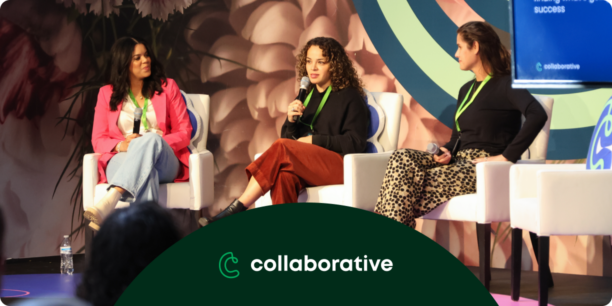Beyond the Numbers: Understanding Nonprofit Ratings & Their Impact

According to Classy’s State of Modern Philanthropy 2023 report, supporters are more activated than ever. Yet, donation volume and the number of donors decreased by 1.7% and 10%, respectively, year over year. One of the challenges driving this philanthropic paradox is fierce competition for donors’ attention.
And while supporters feel inundated with daily ads and a digital landscape that’s saturated and fragmented, these same barriers also make it more difficult for nonprofits to get through the noise and in front of the right donor at the right time. Nonprofit ratings are a tool you can use to help differentiate your organization and stand out in today’s crowded online space.
Additionally, during economic slowdowns, supporters often have fewer dollars to spend. So naturally, they want to ensure their donations go to nonprofits they trust will best use their money to address the causes most important to them. Reviewing nonprofit ratings may be one of their decision-making steps.
Below, we’ll explore the factors considered when evaluating a nonprofit, the organizations that calculate these ratings, and the strategies for improving yours. We’ll also cover the limitations of nonprofit ratings and provide tips on how to communicate your impact and story beyond the numbers.
Nonprofit Ratings: Why They Matter and What They Measure
Various organizations compile nonprofit ratings. These groups are typically nonprofits themselves, with an aim to help donors make informed donation decisions and bring greater nonprofit transparency to the sector. Chief among these groups’ responsibilities is to aggregate information about nonprofits, such as financial statements and IRS Form 990s, and publish evaluations for the public to access.
Charity ratings measure management effectiveness and funding efficiency for nonprofits. Top-rated nonprofits are financially sound, demonstrate meaningful impact toward their missions, and have donors’ trust.
Supporters may turn to nonprofit ratings to help them decide between two advocacy organizations working on the same issue. They may also keep an eye out for warnings from charity rating organizations about nonprofits disregarding best practices.
Nonprofit ratings offer a quantitative measure of how well your nonprofit operates. A positive rating can add an extra boost to your fundraising efforts and elevate your nonprofit brand strategy.
A Comparison of Different Methodologies for Nonprofit Ratings
Organizations such as GiveWell, GlobalGiving, and GreatNonprofits dedicate themselves to evaluating nonprofits and providing comprehensive ratings. Below are four additional groups—arguably the most well-known—for calculating nonprofit ratings, along with the details of what each organization considers when conducting evaluations.
Charity Navigator
Charity Navigator issues star ratings for nearly 200,000 tax-exempt 501(c)(3) charities. The organization calculates ratings based on a weighted sum of beacon scores for four areas (each on a scale of 0 to 100) to create an overall picture of nonprofit effectiveness:
- Accountability & Finance
- Impact & Results
- Leadership & Adaptability
- Culture & Community
All organizations have an Accountability & Finance score based on their IRS Form 990 filing and can earn more beacons by submitting additional information via their Nonprofit Portal. This information includes a nonprofit’s mission, vision statement, strategy, equity and feedback practices, and in some cases, programmatic results.
“The additional beacons are designed to look more holistically at a nonprofit‘s performance, giving donors additional information beyond just Finance & Accountability to make more informed giving decisions.” —Laura Andes, Charity Navigator’s Chief Program Officer
A nonprofit’s weighted score then gets translated into a star rating from 0 to 4, but only if Charity Navigator has enough information in the Impact & Results and Accountability & Finance areas.
Charity Navigator publishes lists of the best overall nonprofits, highest-ranking nonprofits by cause, and top-rated timely nonprofits. For example, the site lists the best nonprofits to donate to for Asian American Pacific Islander Heritage Month in May and includes another list in June for Pride Month.
Only organizations with four stars and at least two beacons are eligible for these highly viewed lists. Through the organization’s Giving Basket feature, supporters can also make donations to their favorite nonprofits through the donate button on its Charity Navigator page.
BBB Wise Giving Alliance
The Better Business Bureau hosts Give.org to evaluate the trustworthiness of tax-deductible public charities through its 20 BBB Standards for Charity Accountability. Nonprofits complete a questionnaire about these standards, which cover four areas of nonprofit operations:
- Governance: This area includes board oversight, size, meetings, compensation, and conflict of interest policies.
- Results reporting: This area includes policies and reporting procedures on a nonprofit’s effectiveness at meeting its fundraising goals.
- Finances: This area includes program and fundraising expenses, audits, accumulating funds, and nonprofit budgeting.
- Truthful transparent communications: This area includes accurate materials, your nonprofit annual reports, website disclosure, donor privacy policies, and complaint procedures.
For each standard, BBB Wise Giving Alliance will mark it as met, not met, or unverifiable. Nonprofits that meet all 20 standards are BBB Accredited Charities and can opt to pay a fee to use the BBB Accredited Charity Seal on their nonprofit website and other materials.
CharityWatch
CharityWatch describes itself as America’s most independent, assertive charity watchdog. Rather than relying on nonprofit organizations to submit impact reports and IRS data, the group conducts its own in-depth analysis of a nonprofit’s audited financial statements, tax filings, state solicitation filings, and other information.
After this analysis, CharityWatch calculates two measurements:
- Program %: The percent of total expenses a nonprofit spent on its programs that year
- Cost to Raise $100: The total amount spent per $100 raised
From this information, CharityWatch assigns a nonprofit a final efficiency rating ranging from A+ to F. The watchdog has completed this analysis for more than 600 charities, generally focusing on those that receive $1 million or more in public donations annually. However, it doesn’t take requests for which nonprofits it analyzes in any given year.
CharityWatch typically updates the rating, governance, and salary information for each charity every other fiscal year.
Candid
Candid, formed in 2019, was a merger between GuideStar and Foundation Center. It still uses the GuideStar name to refer to its branch of programming focused on providing donors with comprehensive data and insights on nonprofits.
While the organization doesn’t provide ratings to nonprofits, a nonprofit can earn Candid Seals of Transparency based on the information it voluntarily provides in its Candid profile. There are different data requirements that build on each other for the four levels of seals:
- Bronze: This level includes basic information, such as contact information, donation information, mission, leadership information, and grantmaker status.
- Silver: This level includes program names, descriptions, and geographic areas served, plus brand information, like logo, tagline, website, and social media handles.
- Gold: This level includes the current year’s financials, nonprofit board members’ names, and leader demographics.
- Platinum: This level includes strategic plans or responses to two questions on strategy and goals, plus one metric from the current year.
This is a low-barrier approach for nonprofits looking to establish ratings online.
Advantages and Drawbacks of Nonprofit Ratings
Nonprofit ratings become part of your brand identity, which can help your organization gain donor trust. Donors can then find the information they need about you, when they need the information, and in transparent, accessible forms. Plus, if you’re listed as one of the top charities by these watchdogs, you also have an opportunity to reach a wider audience.
However, nonprofit rankings also have drawbacks, like not capturing your latest innovations. For example, if you’ve recently launched a new program or announced an impactful partnership, supporters won’t see that in your nonprofit rating. While nonprofit ratings provide some of your nonprofit’s quantitative data, you may not be able to use the sites to share qualitative data that can strengthen donors’ connections to your cause.
Relying solely on nonprofit ratings to drive donor trust and create an active community of supporters isn’t enough. You need to pair the numbers with your overall brand story. For example, you could:
- Highlight how you support your staff through a series of Instagram stories
- Build donor trust with a modern donation site and consistent communications
- Show that you value donors’ opinions by sending a post-event survey
- Use social media to highlight key announcements and interact with supporters
4 Strategies for Improving Your Nonprofit’s Rating
According to nonprofit rating systems, there are a few things you can do to help increase your score and position yourself as one of the best charities.
1. Submit Voluntary Data to Charity Rating Sites
Most charity rating organizations rely, at least in part, on nonprofits’ participation. Set up your profile on different sites and provide basic information to ensure you get included.
2. Ask Your Board Members for Help
Managing these profiles is an ongoing effort that requires time your staff may not have available. Let your nonprofit board members know why these ratings are worth their time, and ask for volunteers to keep your information updated on the different sites.
3. Ensure Your Financial Data Is Transparent
Donors want to know about your organization’s financial health. So make sure your Form 990 and financial audits are accessible on your website. This allows supporters to see how their funding is helping you make a difference.
4. Leverage Annual Reports and Social Media to Communicate Impact
Charity watchdogs look for how well you meet your mission, so tell your nonprofit’s story far and wide. Use annual reports to distill key data, share beneficiary stories on your social media channels, and talk about how donors have helped you grow with intentional language on your online donation forms. Ensure that when someone searches for your nonprofit, they find endless examples of your impact.
Be Mindful of Nonprofit Ratings in Your Overall Brand Strategy
Charitable organizations shouldn’t rely solely on nonprofits’ ratings but consider them part of an overall brand strategy. These public-facing profiles can be powerful nonprofit marketing tools that encourage individual donors to trust your nonprofit.
So be sure to incorporate nonprofit ratings when telling your nonprofit’s story to strengthen relationships with your donors and the public.
Copy Editor: Ayanna Julien

Your Nonprofit's Guide to Storytelling


